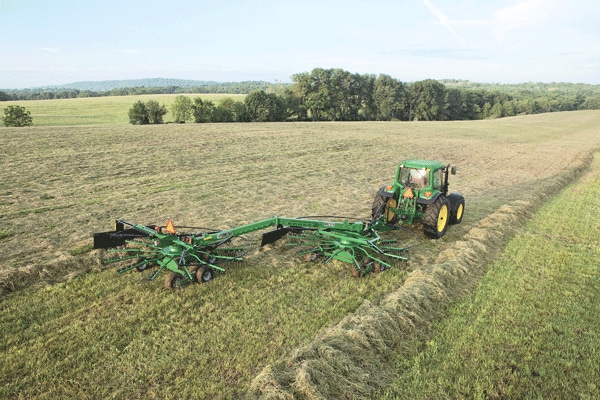
• Take the time now to check your equipment and fix it, so you’re not stuck in the field fixing equipment while trying to hurry and beat the weather.• Follow all of the manufacturer’s recommendations, and inspect the equipment to make sure it’s up to their specifications.
May 13, 2011

Before heading out to the hay field, remember to examine equipment to ensure it is in proper working order.
"Take the time now to check your equipment and fix it, so you’re not stuck in the field fixing equipment while trying to hurry and beat the weather," said Jimmy Maass, safety manager for Virginia Farm Bureau. "Follow all of the manufacturer’s recommendations, and inspect the equipment to make sure it’s up to their specifications."
Check bearings, hydraulic hoses, tires and signal lights. Make sure no cutter blades, teeth or bars are bent or cracked. Also, keep shear bolts handy. Never use regular bolts in place of shear bolts.
Keep a charged water or foam fire extinguisher on all hay equipment and inside all work buildings.
"Relay safety information to each employee and anyone else who helps you, and train them how to properly lift with their legs and how to use all equipment," Maass said.
When working on equipment be sure to shut it down first.
"If a baler gets jammed up, turn it off before clearing it out. For a round baler, engage safety locks or valves on the cylinders when the tailgate is lifted up so it won’t fall down on top of you," Maass said.
Make sure all power take-off shields, safety chains and chain guards — are in place, along with slow-moving vehicle emblems and reflective tape.
"It’s also a good idea to use escort vehicles when moving hay on roadways," Maass said.
Before loading hay, check all straps and chains for frays, breaks and tears, and replace them if they are damaged. Do not stack bales too high, and tie-in stacks by alternating bales and securing each stack.
Strap round bales in place so they will not roll off the wagon or trailer. Be sure the points at which straps are anchored are strong enough to support the load if it moves.
"After driving a few miles, stop and check the straps or chains to make sure they haven’t come loose," Maass said.
You May Also Like



